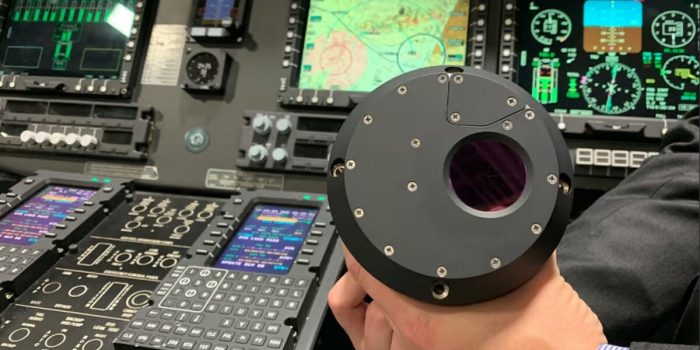Northrop Grumman has introduced a novel sensor system, named ATHENA (Advanced Tactical Hostile Engagement Awareness), designed to safeguard aircraft against the menace of heat-seeking, shoulder-fired missiles. In modern warfare, it is often the simplest weapons that pose the most persistent threats, as recent events have demonstrated.
When aircraft take off from unsecured airfields, their chief concern is not high-tech munitions from invisible fighter planes but rather the unassuming Man-Portable Air Defense Systems (MANPADs) operated by individuals concealed in bushes or behind obstacles.

MANPADs, portable launchers initially developed in the 1950s, fire heat-seeking missiles that track an aircraft’s engine’s heat signature. Although their range is limited, they can be deadly, and they remain attractive to terrorist groups despite stringent international controls. To counter this threat, transport planes often deploy flares during takeoff to confuse missile sensors. However, these countermeasures can only defeat what they can detect.
ATHENA fills this gap with a “staring sensor” that continuously scans for potential threats, including MANPADs and anti-tank guided missiles. Northrop claims that ATHENA offers superior resolution and range compared to previous sensors, granting more time to detect and respond to threats.
An additional advancement in ATHENA is its autonomous operation, driven by advanced software and data processors. This independence means that the system doesn’t drain the aircraft’s computing resources, which can be used for other essential tasks.
The result is a sensor that provides a 360-degree view for the pilot and crew. It seamlessly integrates multiple video feeds into one display and even allows operators to see through the aircraft’s body, effectively rendering it invisible.

In a world where simplicity often poses the most significant threat, ATHENA represents an innovative solution to protect aircraft from the persistent danger of MANPADs and heat-seeking missiles. Its combination of advanced technology, autonomous operation, and enhanced detection capabilities makes it a valuable addition to aircraft defense systems, offering a more comprehensive and effective approach to safeguarding against these low-tech, yet dangerous, weapons.
“ATHENA exemplifies our approach to sensors, using available hardware to perform multiple functions and missions,” said Dennis Neel, program director, Northrop Grumman. “This increases rotary wing aircraft survivability and provides situational awareness capabilities previously available only on much larger aircraft,” said Neel. “It has the potential to make any aircraft significantly more survivable. Bringing warfighters home safely is the ultimate goal.”


